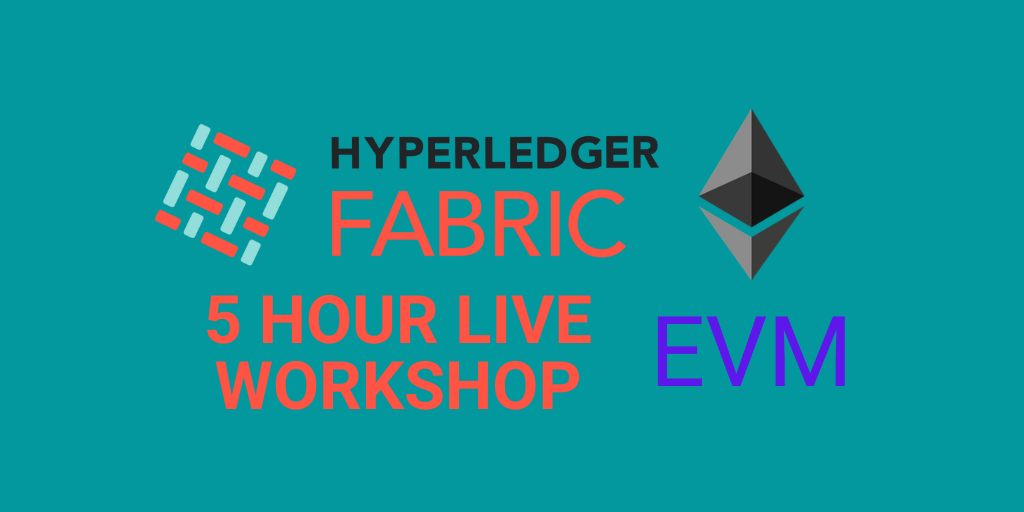
- This event has passed.
Linux Hyperledger Fabric Developer Workshop
February 22, 2023 @ 11:00 am - February 23, 2023 @ 4:00 pm

Linux Hyperledger Fabric Developer Workshop
The Linxu Hyperledger Fabric Developer Workshop and course upskills existing developers providing the tools and practical skills in implementing business logic by writing chaincode, Fabric’s smart contracts, and creating enterprise blockchain-based applications. In this course developers learn how to implement and test a chaincode in Golang for any use case, manage the chaincode life cycle, create Node.js client applications interacting with Hyperledger Fabric networks, control access to the information based on a user identity, set up and use private data collections and much more.
WHO IS IT FOR
This course is designed for developers who want to master their skills in the Hyperledger Fabric chaincode and application development.
WHAT YOU’LL LEARN IN THE HYPERLEDGER FABRIC DEVELOPER WORKSHOP
In this course, you’ll learn how to implement and test a chaincode in Node.js for any use case, manage the chaincode life cycle, create Node.js client applications interacting with Hyperledger Fabric networks, control access to the information based on a user identity, set up and use private data collections and much more.
WHAT IT PREPARES YOU FOR
This course will help you build expertise and obtain practical skills in implementing business logic by writing the Chaincode and creating enterprise blockchain-based applications.
CERTIFIED HYPERLEDGER FABRIC DEVELOPER WORKSHOP OUTCOMES
Sit and pass Linux’s CHFD (Certified Hyperledger Fabric Developer) Exam
Hyperledger Fabric Developer Workshop Documentation
The Hyperledger fabric is an implementation of blockchain technology, that has been collaboratively developed under the Linux Foundation’s Hyperledger Project. It leverages familiar and proven technologies, and offers a modular architecture that allows pluggable implementations of various function including membership services, consensus, and smart contracts (Chaincode) execution. It features powerful container technology to host any mainstream language for smart contracts development.
To contribute to this documentation, create an issue for any requests for clarification or to highlight any errors, or you may fork and update the source, and submit a pull request.
Below, you’ll find the following sections:
- Getting started
- Quickstart
- Developer guides
- Fabric developer guide
- Chaincode developer guide
- API developer guide
- Operations guide
Getting started
If you are new to the project, you can begin by reviewing the following links. If you’d prefer to dive right in, see the Quickstart section, below.
- Whitepaper WG: where the community is developing a whitepaper to explain the motivation and goals for the project.
- Requirements WG: where the community is developing use cases and requirements.
- Canonical use cases
- Glossary: to understand the terminology that we use throughout the Fabric project’s documentation.
- Fabric FAQs
Quickstart documentation
- Development environment set-up: if you are considering helping with development of the Hyperledger Fabric or Fabric-API projects themselves, this guide will help you install and configure all you’ll need. The development environment is also useful (but, not necessary) for developing blockchain applications and/or Chaincode.
- Network setup: This document covers setting up a network on your local machine for development.
- Chaincode development environment: Chaincode developers need a way to test and debug their Chaincode without having to set up a complete peer network. This document describes how to write, build, and test Chaincode in a local development environment.
- APIs: This document covers the available APIs for interacting with a peer node.
Fabric developer guide
When you are ready to start contributing to the Hyperledger fabric project, we strongly recommend that you read the protocol specification for the technical details so that you have a better understanding of how the code fits together.
- Making code contributions: First, you’ll want to familiarize yourself with the project’s contribution guidelines.
- Setting up the development environment: after that, you will want to set up your development environment.
- Building the fabric core: next, try building the project in your local development environment to ensure that everything is set up correctly.
- Building outside of Vagrant: for the adventurous, you might try to build outside of the standard Vagrant development environment.
- Logging control: describes how to tweak the logging levels of various components within the fabric.
- License header: every source file must include this license header modified to include a copyright statement for the principle author(s).
Chaincode developer guide
- Setting up the development environment: when developing and testing Chaincode, or an application that leverages the fabric API or SDK, you’ll probably want to run the fabric locally on your laptop to test. You can use the same setup that Fabric developers use.
- Setting Up a Network For Development: alternately, you can follow these instructions for setting up a local network for Chaincode development without the entire fabric development environment setup.
- Writing, Building, and Running Chaincode in a Development Environment: a step-by-step guide to writing and testing Chaincode.
- Chaincode FAQ: a FAQ for all of your burning questions relating to Chaincode.
API developer guide
- APIs – CLI, REST, and Node.js
- CLI: working with the command-line interface.
- REST: working with the REST API.
- Node.js SDK: working with the Node.js SDK.
Operations guide
- Setting Up a Network: instructions for setting up a network of fabric peers.
- Certificate Authority (CA) Setup: setting up a CA to support identity, security (authentication/authorization), privacy and confidentiality.
- Application ACL: working with access control lists.
